Norman Ornstein and Thomas Mann, among many others, have made the case that our contemporary politics are “vehemently adversarial.” That’s not exactly breaking news, but their book “It’s Even Worse Than It Looks” does a particularly good job of documenting the phenomenon. Even more than at most points in history, our leaders are clinging to their partisan corners, and rhetorically portraying Americans in cartoonish hero versus villain terms.
A lot of attention is given to the corrosive effects of partisans’ villainizing. But in its way, the partisans’ hero worship is just as harmful. Polarizing partisans have effectively created groups of Untouchables, constituency groups that are so celebrated by one or both of the major political parties that leaders fail to responsibly oversee and regulate them.
Both major parties have their Untouchables. With Democrats, government workers, teachers, and union workers are among the Untouchable groups often described like infallible heroes. Meanwhile, Republicans place business people, military brass, and religious leaders on unreasonably high pedestals. Both parties compete to see who can slather the most flattery and government benefits on bipartisan Untouchables, such as soldiers, health care providers, and seniors.
Untouchable Teachers
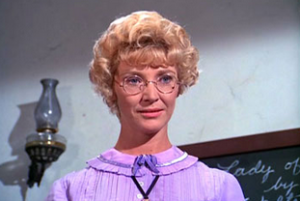 As a case study, consider how the left often treats teachers. Listening to Democrats talk about teachers, you would think that every last one of them is a cross between saintly Miss Beadle from the television series Little House on the Prairie series and life-changing John Keating from the film Dead Poet’s Society. Anyone who has spent time in the public school system understands that the reality is more complicated. Teacher quality ranges the full gamut from excellent to poor, as is the case with every profession on the planet.
As a case study, consider how the left often treats teachers. Listening to Democrats talk about teachers, you would think that every last one of them is a cross between saintly Miss Beadle from the television series Little House on the Prairie series and life-changing John Keating from the film Dead Poet’s Society. Anyone who has spent time in the public school system understands that the reality is more complicated. Teacher quality ranges the full gamut from excellent to poor, as is the case with every profession on the planet.
So what’s the harm with a little too much constituency group rah-rah? Can’t the world benefit from more positivity? The problem is, this over-the-top hero worship leads to bad policy, where everyone in the worshiped group is treated as if they are all equally noble and skilled.
They aren’t. While teaching is a very noble profession, poor teachers obviously exist. Being a poor teacher doesn’t equate with being a bad person – I’m not a bad guy, but I would be a horrible teacher – but bad teachers are harmful to children. Ineffective teachers, even well-meaning ones, can do a lot of damage to students when they are allowed free reign to teach ineffectively. The education reform group Students First explains:
Unfortunately, the reality is that many current policies treat all teachers as if they are interchangeable. These policies often cause highly effective teachers to be paid less than their least effective colleagues. And they fail to protect the best teachers—the ones who are most positively impacting student achievement—from layoffs. As a result, most districts have low retention rates and retain their best and worst teachers at similar rates.
Despite this, many Democrats universally treat even poor performing teachers like Untouchables. For instance, this year Minnesota again failed to enact a law that would allow teacher performance to be one of the factors considered in teacher retention decisions. During this debate, anyone who dared to say that teachers should be judged on performance – as happens in almost all other professions — were called names by liberals. “Anti-teacher!” “School-basher!” “Right wing extremist!” (By the way, about two-thirds of Minnesotans currently fall into this category.)
Untouchable Business People
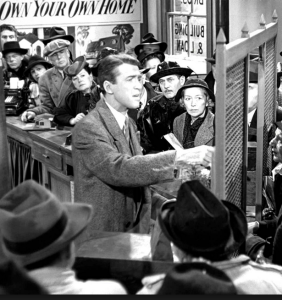 Republicans also have many Untouchables that they fail to regulate responsibly. Listening to the right talk about business people, or ”job creators” as their PR gurus coach them to say, you would think that all business people will automatically turn any type of tax break into great-paying jobs. You would think that every last one of them is some combination of the job-creating genius Henry Ford and the Main Street humanitarian George Bailey from It’s A Wonderful Life.
Republicans also have many Untouchables that they fail to regulate responsibly. Listening to the right talk about business people, or ”job creators” as their PR gurus coach them to say, you would think that all business people will automatically turn any type of tax break into great-paying jobs. You would think that every last one of them is some combination of the job-creating genius Henry Ford and the Main Street humanitarian George Bailey from It’s A Wonderful Life.
Obviously, the reality is that some businesspeople do use tax breaks to invest in ventures that create good jobs, while others will use their tax savings to amass personal wealth, expand their operations in other countries, make poor investment decisions, or invest in purchasing a plutocracy that will deliver still more tax loopholes to them.
Yet anyone who objects to giving more tax breaks to business people is labeled by Republicans as “anti-jobs,” “anti-business” or “socialist.”
The world is just not that black and white. No group of Americans is 100% virtuous, or 100% worthless, and public policies have to recognize that.
While it may be unpopular to say in the partisan cheering sections, the truth is that some health care providers are unethical, greedy and/or insufficiently skilled, and need to be regulated. Some government workers are incompetent, unqualfied, and/or lazy, and allowing them to continue offering sub-par job performance hurts taxpayers and vulnerable citizens they are supposed to be serving. Some seniors are wealthy enough that they don’t need to be lavished with government benefits at the expense of more vulnerable Americans. Some military leaders are too trigger happy or myopic, and therefore need to have their arguments carefully scrutinized or rejected.
When partisans blindly apotheosize political Untouchables, important oversight and regulation goes undone. Untouchable constituencies lead to unaccountable policies. A leader fighting for accountability among Untouchables shouldn’t be shouted down with simplistic name-calling. They are merely doing their job as responsible public managers, regulators and legislators.
 These are very scary times. Who among us does not lie awake at night worrying about dying in an elevator? I mean, what if one came crashing down while you were riding in it? Makes me shudder just thinking about it.
These are very scary times. Who among us does not lie awake at night worrying about dying in an elevator? I mean, what if one came crashing down while you were riding in it? Makes me shudder just thinking about it.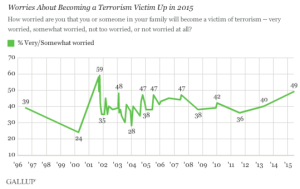 Despite this relatively low level of risk, many Americans are overcome by our fear of terrorism. Even in June 2015, well before the recent Paris and California terrorist attacks, Gallup was finding that about half (49%) of Americans were worried that they or someone in their family would personally become a victim of terrorism. Given the 1-in-20,000,000 odds, that level of fear is not rational.
Despite this relatively low level of risk, many Americans are overcome by our fear of terrorism. Even in June 2015, well before the recent Paris and California terrorist attacks, Gallup was finding that about half (49%) of Americans were worried that they or someone in their family would personally become a victim of terrorism. Given the 1-in-20,000,000 odds, that level of fear is not rational.
 Watching the news coverage of the Republican presidential campaign, you get the feeling that there is a wave of support for the ideas of leading Republican candidates like Donald Trump, Ben Carson, Ted Cruz and Marco Rubio. For example,
Watching the news coverage of the Republican presidential campaign, you get the feeling that there is a wave of support for the ideas of leading Republican candidates like Donald Trump, Ben Carson, Ted Cruz and Marco Rubio. For example, 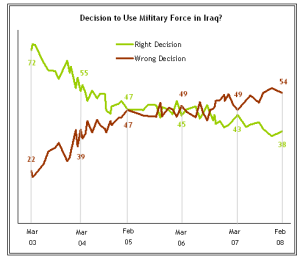 In other words, the national mood is much like when America rushed into the Iraq War in 2003.
In other words, the national mood is much like when America rushed into the Iraq War in 2003. 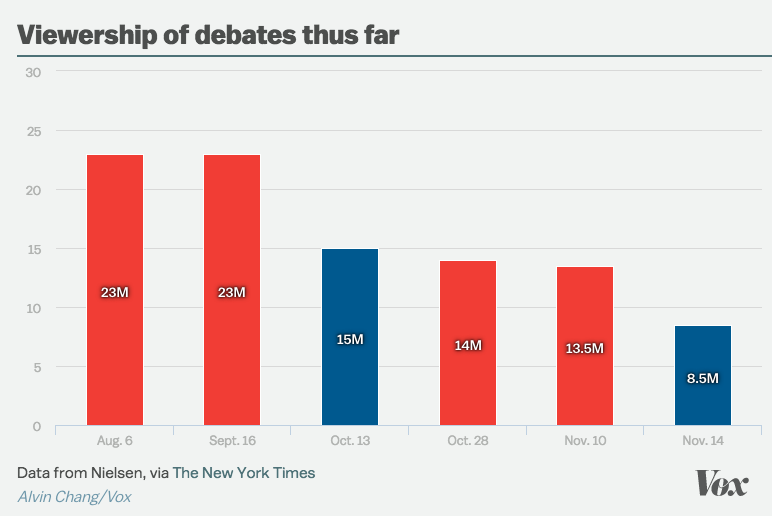
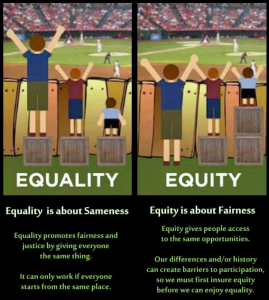 We also know that research shows that education achievement gaps can be measured in children as young as
We also know that research shows that education achievement gaps can be measured in children as young as 

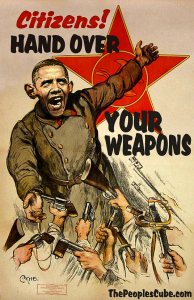 If you really think President Obama, who has been President for seven years now and only has one year left in his term, is a gun confiscator, wouldn’t you think he would have confiscated by now? Don’t you think he would have done it in the first two years of his presidency, when his party controlled the House, Senate and White House?
If you really think President Obama, who has been President for seven years now and only has one year left in his term, is a gun confiscator, wouldn’t you think he would have confiscated by now? Don’t you think he would have done it in the first two years of his presidency, when his party controlled the House, Senate and White House? Here’s why: Walker’s logic path quickly collapses as soon as you start connecting the dots.
Here’s why: Walker’s logic path quickly collapses as soon as you start connecting the dots.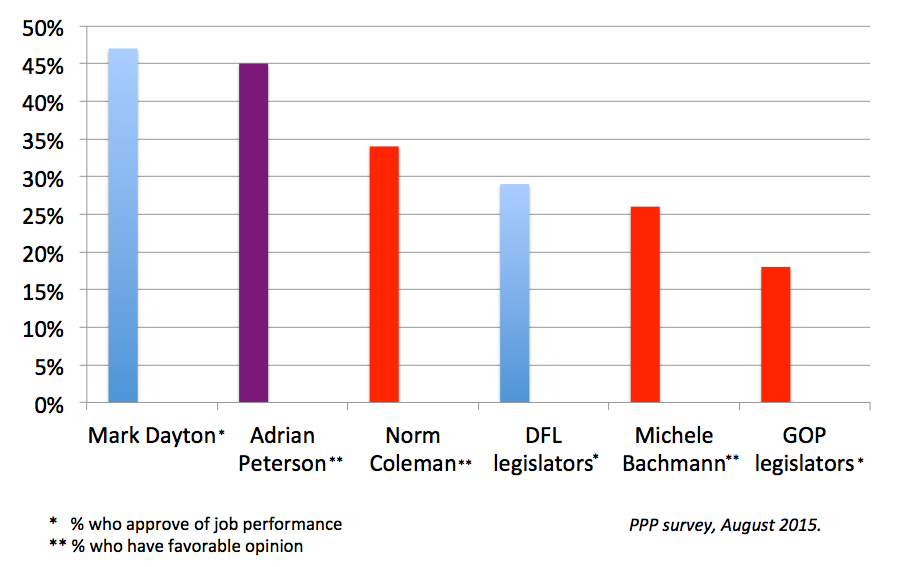
 The antics of Republican members of the Minnesota State Legislature used to be a
The antics of Republican members of the Minnesota State Legislature used to be a 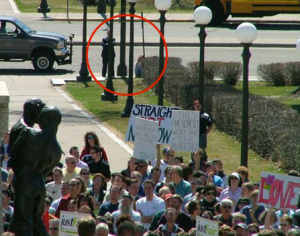 But to my knowledge, there were no legislators
But to my knowledge, there were no legislators 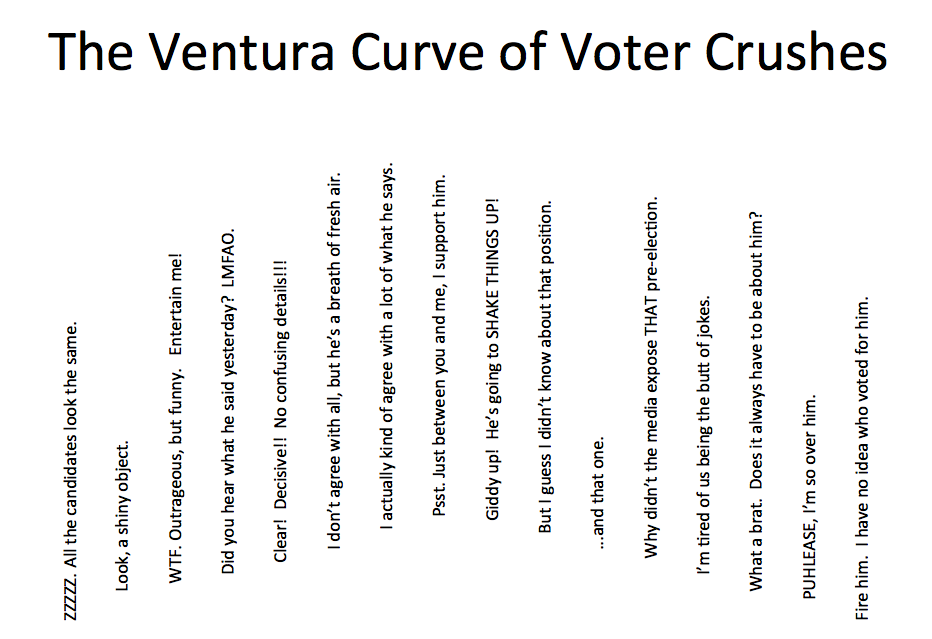
 Become a member of our dynamic Minnesota House of Representatives team! We are seeking candidates with deep professional experience, strong educational background, extensive community ties, impeccable personal ethics and morals, outstanding interpersonal skills, uncommon diplomatic acumen, stellar leadership qualities, deep policy expertise in several different areas, and a highly photogenic family. Come associate your good name with an organization that has the approval of a historically low
Become a member of our dynamic Minnesota House of Representatives team! We are seeking candidates with deep professional experience, strong educational background, extensive community ties, impeccable personal ethics and morals, outstanding interpersonal skills, uncommon diplomatic acumen, stellar leadership qualities, deep policy expertise in several different areas, and a highly photogenic family. Come associate your good name with an organization that has the approval of a historically low 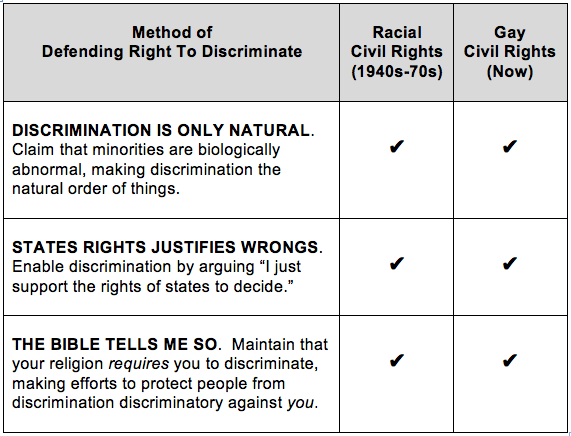
 As a case study, consider how the left often treats teachers. Listening to Democrats talk about teachers, you would think that every last one of them is a cross between saintly Miss Beadle from the television series Little House on the Prairie series and life-changing John Keating from the film Dead Poet’s Society. Anyone who has spent time in the public school system understands that the reality is more complicated. Teacher quality ranges the full gamut from excellent to poor, as is the case with every profession on the planet.
As a case study, consider how the left often treats teachers. Listening to Democrats talk about teachers, you would think that every last one of them is a cross between saintly Miss Beadle from the television series Little House on the Prairie series and life-changing John Keating from the film Dead Poet’s Society. Anyone who has spent time in the public school system understands that the reality is more complicated. Teacher quality ranges the full gamut from excellent to poor, as is the case with every profession on the planet. Republicans also have many Untouchables that they fail to regulate responsibly. Listening to the right talk about business people, or ”job creators” as their PR gurus
Republicans also have many Untouchables that they fail to regulate responsibly. Listening to the right talk about business people, or ”job creators” as their PR gurus 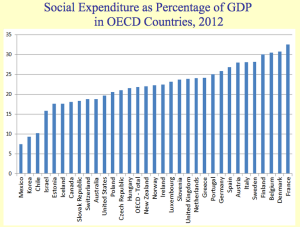 High as a kite from these clippings and the vindication they represent, DFLers run the risk of over-stepping, of pushing Minnesotans further than it they are comfortable going. As much as DFL politicians fantasize about bringing the social welfare
High as a kite from these clippings and the vindication they represent, DFLers run the risk of over-stepping, of pushing Minnesotans further than it they are comfortable going. As much as DFL politicians fantasize about bringing the social welfare 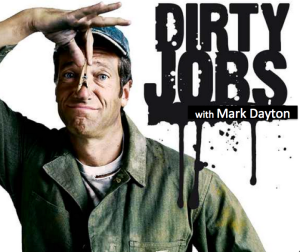 Governor Mark Dayton is Minnesota’s political version of Mike Rowe, the star of the Discovery Channel television show “Dirty Jobs.” Rowe’s show is all about him taking on difficult, disrespected and grotesque jobs that others avoid, such as being a sewer inspector, road kill scavenger, worm dung farmer, shark repellent tester, maggot farmer, and sea lamprey exterminator. Who knew that worm dung needed farming?
Governor Mark Dayton is Minnesota’s political version of Mike Rowe, the star of the Discovery Channel television show “Dirty Jobs.” Rowe’s show is all about him taking on difficult, disrespected and grotesque jobs that others avoid, such as being a sewer inspector, road kill scavenger, worm dung farmer, shark repellent tester, maggot farmer, and sea lamprey exterminator. Who knew that worm dung needed farming?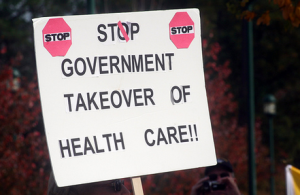 On the heels of the closing of the second year of open enrollment for Obamacare coverage, expect to hear a lot of “government takeover of health care” ranting from conservatives.
On the heels of the closing of the second year of open enrollment for Obamacare coverage, expect to hear a lot of “government takeover of health care” ranting from conservatives.
 Minnesota has the best quality of life of in the nation, and we must bribe seniors to stop them from escaping it, say two stories from today’s news coverage.
Minnesota has the best quality of life of in the nation, and we must bribe seniors to stop them from escaping it, say two stories from today’s news coverage. Anybody who has followed my lunatic rantings knows that I’m an unabashed wealth redistributin’, Wall Street regulatin’, minority rightsin’, carbon tradin’, Keynesian spendin’, Medicare-for-Allin’, tree-huggin’, consumer protectin’, Pentagon cuttin’, infrastructure rebuildin’, union supportin’, monopoly bustin’, education investin’ liberal.
Anybody who has followed my lunatic rantings knows that I’m an unabashed wealth redistributin’, Wall Street regulatin’, minority rightsin’, carbon tradin’, Keynesian spendin’, Medicare-for-Allin’, tree-huggin’, consumer protectin’, Pentagon cuttin’, infrastructure rebuildin’, union supportin’, monopoly bustin’, education investin’ liberal.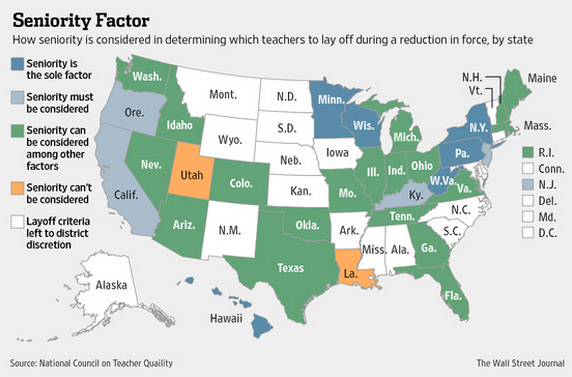 A talented young teacher who is successfully improving kids’ learning automatically should be mandated to be the first to be fired? That’s putting kids first? That’s pro-teacher? That’s pro-education? That’s respecting the teaching profession? That’s helping struggling low-income school districts, who have a disproportionate share of younger teachers? That’s liberal?
A talented young teacher who is successfully improving kids’ learning automatically should be mandated to be the first to be fired? That’s putting kids first? That’s pro-teacher? That’s pro-education? That’s respecting the teaching profession? That’s helping struggling low-income school districts, who have a disproportionate share of younger teachers? That’s liberal? It sounds simplistic, but I think it would help a lot if legislators had their offices together, so that every other office was a different political party. They’d come out and talk to each other. In the House it’s a floor separating them.
It sounds simplistic, but I think it would help a lot if legislators had their offices together, so that every other office was a different political party. They’d come out and talk to each other. In the House it’s a floor separating them. Would having Democrats and Republicans in every other office automatically lead to a grand new era of bipartisan peace, love and understanding? Nope. But it would almost certainly lead to more hallway conversations: “What are you doing this weekend?” “How’s your family?” “Can we borrow a chair for an hour?” “Cold enough for ya? “How about them Twins?”
Would having Democrats and Republicans in every other office automatically lead to a grand new era of bipartisan peace, love and understanding? Nope. But it would almost certainly lead to more hallway conversations: “What are you doing this weekend?” “How’s your family?” “Can we borrow a chair for an hour?” “Cold enough for ya? “How about them Twins?” In the wake of Minnesota Vikings punter Chris Kluwe’s advocacy of gay marriage, Vikings Special Teams Coach Mike Priefer publicly said he was tired of Kluwe-related distractions, privately told Kluwe that the gays should be rounded up and nuked, and fired Kluwe and replaced him with an untested rookie.
In the wake of Minnesota Vikings punter Chris Kluwe’s advocacy of gay marriage, Vikings Special Teams Coach Mike Priefer publicly said he was tired of Kluwe-related distractions, privately told Kluwe that the gays should be rounded up and nuked, and fired Kluwe and replaced him with an untested rookie.